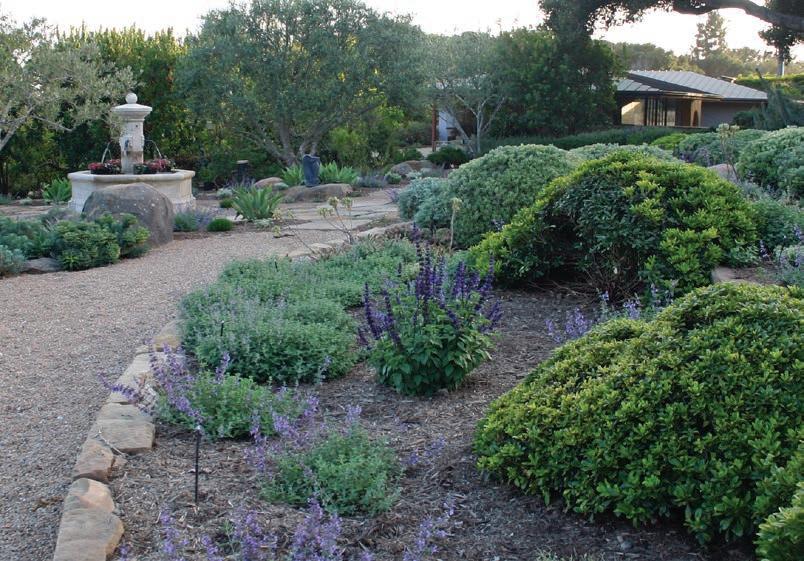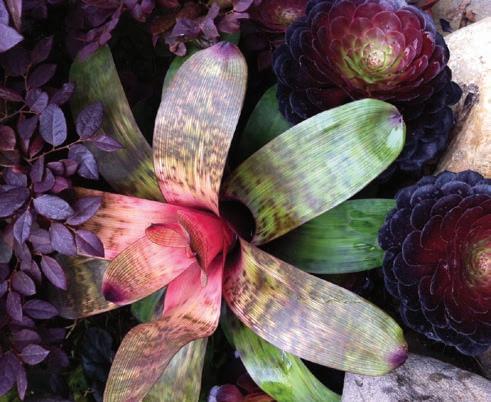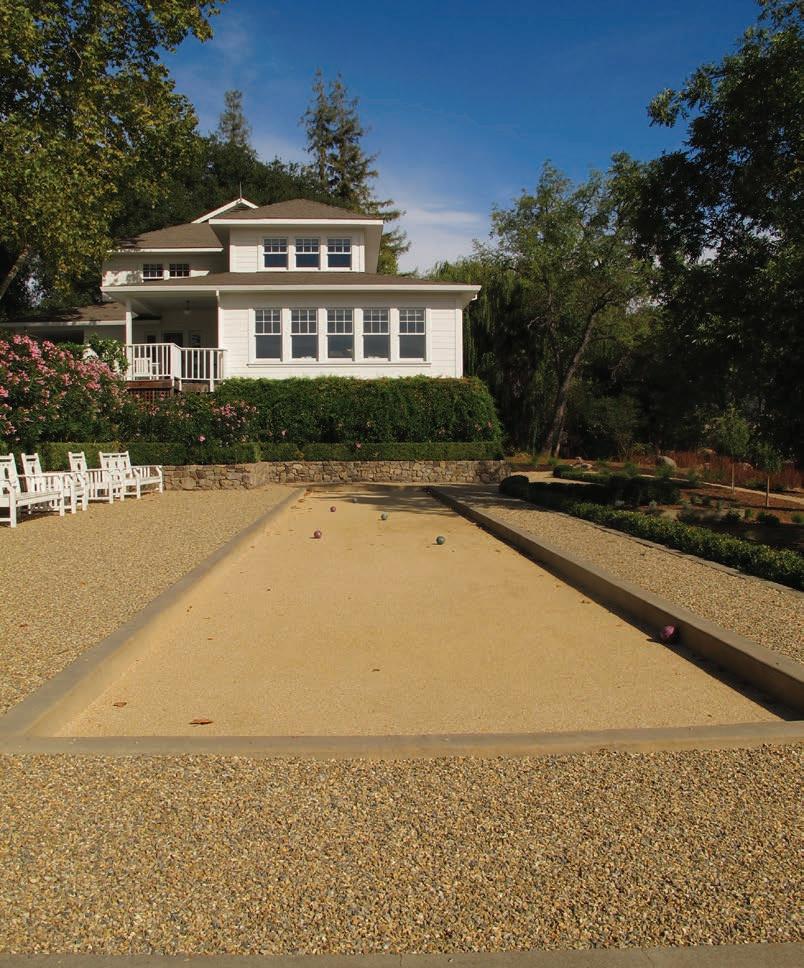
3 minute read
Gardening: sans lawn I
1. Shade gardens and meandering paths: Have you ever walked through a forest? The earth is soft beneath your feet, springy to the step, the air fragrant and cool. A shade garden is a great way to re-purpose the space left by your now-dead lawn. The careful selection of trees and shrubs and the fashioning of meandering pathways leading one to destinations like a secret garden, a hammock or tree house make this a perfect venue for kids and dogs to romp and play and who doesn’t love a good game of “Hide and Seek”? resourCes: succulents simpliFied by Debra Lee Baldwin www.Debraleebaldwin.com eye OF the day Garden desiGn center
2. Say it with succulents: If you’ve had any doubts about the feasibility of a beautiful, green oasis, without lawn, succulent expert, Debra Lee Baldwin will convince you otherwise. In her own garden she created the illusion of water complete with succulent “lily pads”. Debra’s most recent book “Succulents Simplified” is all you will need to design your own lush paradise.
3. Courtyards and Fountains: When your lawn disappears how about creating a space for outdoor entertaining by constructing pathways and terraces using stone or gravel? Add a fountain, pottery, sculpture or specimen plant as a focal point. Soften the area with low- water plantings such as Lavender, Thyme, Santa Barbara Daisy, Nepeta, Yarrow and Mexican Sage and you have a lovely, fragrant, easyto-care-for and garden everyone can enjoy for years to come.
4. Herb and Flower Gardens: Herb and flower gardens are excellent choices for a drought-tolerant landscape. Yes, you can have Roses in a low-water garden. According to local experts at Rose Story Farm and Otto and Sons Nursery, Roses don’t require as much water as you might think as long as you have good, living soil and lots of mulch. If Roses aren’t your thing, then consider Penstemon, Marigolds, Alstroemeria, Shasta Daisy, Sunflower, Dahlia, Lavender, Coreopsis or Gazania which all do very well in our climate. Construct raised beds or plant them in the ground for endless bouquets of color.
5. Walk on (or not) groundcovers: If by now you aren’t inspired to rip out your lawn and get planting there’s always groundcover. A few reliable choices are Dymondia, creeping Thyme and Wooly Yarrow, all of which will tolerate traffic once established. If you want an expanse of green, there are ground covers that will fill the need: Sedum, Santa Barbara Daisy, Snow in Summer, Santolina. Plus, there are a myriad of grasses that need little care or water.
There are countless other ways to take advantage of the new expanse in your garden-we didn’t even talk about edible gardens! Think of this as an opportunity I hope I have given you a few ideas to get you started. If this doesn’t inspire you, call me; I have lots more ideas. Or, visit www.montecitolandscape. com where you’ll find an abundance of examples and visual aids.
Until next time, fill your garden with joy (not lawns)!
Lisa Cullen, landscape designer and organic gardener owns Montecito Landscape with her husband, Chris. She can be reached at 805.969.3984 or www. montecitolandscape.com.

4620 Carpinteria Ave, Carpinteria, CA 93013 (805) 566-0778
Groundcover in background is low-growing Myoporum which makes a great lawn substitute.

by LIsA CuLLen
Abeautiful, lush green lawn has been the standard of perfection for California landscapes in times past. Visions of neighborhood touch football games played on massive green backyards, family picnics, croquet tournaments and just about anything lawn related is part of the California Dream. But today’s consumer, especially in drought sensitive Santa Barbara, is considering that it might be “greener” to have less green in their yards.
According to California Drought Preparedness, lawn watering accounts for more than half of the water used by most California households. One alternative for today’s homeowner is to replace at least part of the lawn by building a Bocce Ball court or other hardscapes in their gardens to reduce water costs while at the same time maximizing their recreation value.
Bocce Ball is one of the world’s oldest games, played by the Egyptians as early as 5,000 BC. It made its way to ancient Greece and eventually Rome, where the rules of the game as we know it today were codified. In fact, Bocce became a favorite sport with rulers and statesmen and was enjoyed by Roman Emperors Augustus and Julius Cesar, Astronomer Galileo and even Queen Elizabeth I.
Although international regulation courts are 91 feet long by 13 feet wide, you can build a court to fit almost any yard. The area needs to be leveled, the frame built (you can use landscape ties) and then filled with 6 inches of crushed stone to ensure proper drainage. The final surface of powdered oyster shell is then applied. Before you install the oyster shell, line the court surface with chicken wire and filter fabric so you won’t have gophers interfering with your Bocce game!
The average 5,000 square foot lawn consumes about 312,000 gallons of water every year at a cost of about $1,664.00. By removing lawn and constructing a Bocce Ball court (at a cost of about $4,500.00) your investment pays for itself in a little less than three years. When you add in the cost of mowing, blowing and fertilizer, it’s less than two!
Although it is recommended to have a Bocce Ball court installed by a licensed professional, there are various resources available if you decide to build it yourself.

For more information on Bocce Ball construction and pricing options, call cicileO landscapes, inc. at 805967-3939 or visit www.cicileo.com. lisa cullen, landscape designer, organic gardener and co-owner of Montecito Landscape can be reached at montecitolandscape.com or 805-969-3984.










